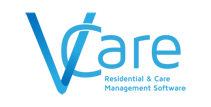Why health monitoring has become a hot topic: The status of monitoring today
Artificial intelligence (AI) enabled monitoring systems are pushing the boundaries of what is possible given continuous improvements of technological hardware, particularly sensors and cameras, in combination with AI software and the capabilities it provides including computer vision, machine learning, and predictive analytics.
Health monitoring is a hot topic primarily because of the cost-saving benefits to the business of health service delivery. The elderly are an obvious target group as increased longevity increases their number and proportion of the population, and whose health needs as a group are more complex.
Health monitoring regardless of age group is poised to become more topical because of multiple converging factors:
- Rapid technology advances particularly with cameras, sensors, and AI
- An increasing number of people (not just the elderly) who can benefit from monitoring
- A catalyst event (global pandemic) that is forcing decreased personal contact
- The transition to precision health (personalised rather than demographic)
- Pressure to control ballooning government health spending
- Pressure on elders to remain at home longer before moving to care facilities
- A shortage of health care workers, particularly in the aged care sector
The status of health monitoring technology today
The scope of health monitoring technologies, both physiological and behavioural is already widespread, the systems in use ranging from commoditised low-cost devices; wearables and watches paired with phones, that typically monitor vital signs, fitness, sleep, heart rate, stress, and other aspects of health, through to highly sophisticated high-cost specialist machines, normally only found in hospitals.
Monitoring devices are increasingly digital: digital thermometers, digital sleep apnoea monitors, digital audiometers, digital blood pressure monitors, digital heart monitors, digital cameras, digital bed and mat sensors, digital watches for vitals, and GPS tracking, pretty much digital everything.
Traditional medical device companies currently dominate the provider landscape however new entrants are arriving constantly. Global consumer market technology companies such as Apple, Microsoft, Google, and Amazon enter the healthcare monitoring market and they are becoming well established because they bring with them a deep understanding of technology, particularly data analytics as well as user interface design expertise to optimise the user experience.
Examples of AI-enabled monitoring systems available today:
PainChek: (www.painchek.com) Using a commodity smartphone camera, facial muscle movements indicative of pain are recorded and analysed using AI-driven facial recognition.
Gillie AI: (www.gillie.io) monitors elders in-home care via 24/7 video streaming helping care providers anticipate potential problems including sending alerts.
Myia Health: (www.myiahealth.com) uses streams of personal and health data from wearable devices (Apple Watch and Fitbit) to monitor chronically ill patients. Applies machine learning and other artificial intelligence techniques to predict relapses enabling preventive action.
Feebris: (www.feebris.com) uses an AI to extract clinical insights and can generate diagnoses related to complex respiratory conditions.
Vtuls: (www.vtuls.com) uses an AI to track 40+ vital signs, including blood pressure, blood oxygen, heart rate, temperature using a handheld biosensor device.
iRhythm: (www.irhythmtech.com) uses an AI to detect cardiac arrhythmias by combining wearable biosensing technology with cloud-based data analytics and machine-learning capabilities.
Babylon Health (www.babylonhealth.com) provides an AI chatbot that communicates health information based on a Q&A with elders.
AiCure: (www.aicure.com) has an AI healthcare assistant that uses a smartphone camera to monitor a person’s treatment progress by measuring changes in facial expression.
ten3T: (www.ten3thealth.com) has developed a patch for remote elder monitoring. The device collects vital signs information and other data. Its algorithms analyse that data in real-time, sending alerts when it detects an imminent problem.
Datamine (NZ): (www.datmine.com) has created ëlarm an app that detects signs of COVID-19 and other viruses two to three days before symptoms appear. It sources its data from your wearable fitness tracker or smartwatch.
There is a wide variety of AI-enabled monitoring technologies available today and whilst much is available, AI technology is not yet highly embedded within health monitoring systems in New Zealand. Regular media reports concerning the state of our DHB’s support this assertion.
About the Author

Ian Hight
Client Director – Jade Software
Ian is an experienced business leader in technology, passionate about bringing together people and
technology to address organisational challenges. With an extensive track record working with businesses on the
development of strategy, change management, and the adoption of new technology.
Fervent about innovation and recognised as a committed customer advocate with extensive
experience in the deployment and operation of complex technology as well as the management of
technology teams.
Ian has recently focused on the use of technology within aged care sector.






